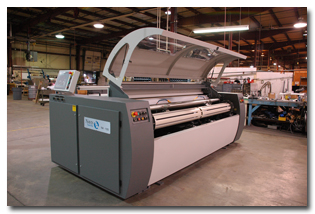Are you, dear reader, one of the people who grew up in the business world writing letters and
sending telex messages? Were you astonished, too, when the fax machine sneaked into daily business
life? At that time, everyone was impressed and certain that this development was the peak of
electronic communication: Sending handwritten or typed messages and even pictures through the
telephone lines!
The WWW Explosion
In the very late 1960s, US researchers started to develop an electronic in-house
communication system, which in the future will probably lend its name to a new age of humankind.
The Internet — or, better to say, the World Wide Web — has become the global communication network
and changed the world forever. These days, most of the world’s population is connected virtually
via the Internet, and it’s common sense to have one’s own email address. Young people can’t imagine
a world without the Internet and emails. Moreover, the development of cheap cell phones accelerated
the age of fast, short and — sometimes useless — information. However, that wasn’t the end of the
electronic communication revolution — yet.
The Ultimate (?) Step: Twitter
And now, a further step has appeared in the center of the electronic communication: Twitter.
And, believe it or not, dear reader, it has been on the news, connected with the re-election
campaign of US President Barack Obama. The news said that during the second TV debate between
President Obama and his challenger Mitt Romney, 7.2 million messages — so called “tweets” — were
instantly posted online to comment on the event. Just to make it clear: 7.2 million tweets — this
means 110,000 tweets per minute. Quite amazing.
Beware Of Social Media
As the Rupp Report of last week wrote (see ”
The
Rupp Report: The Global Cotton Industry In Search Of A New Approach,”
TextileWorld.com, October 16, 2012):
In times of increased environmental consciousness, and especially in so-called
developed countries, people are asking more and more for green or sustainable production. In
addition to this increased environmental consciousness, there is the modern generation of
communication using social media such as Facebook or others to generate positive or negative
images. Due to this fact, big retailers around the world have started to think about “green or
sustainable products.” Many famous labels are producing and marketing sustainable products, or
claiming that their production sites follow sustainable, sound practices. Frankly speaking, many
times, after a check by a nongovernmental or other such organization, the results are more wishful
thinking than reality. This situation has led to some devastating misunderstandings among the
global customers — and a lack of trust.
Examples from the food industry of denial or hiding of information or providing
misinformation to the customers demonstrate that it doesn’t take long to build up a bad image. And
a bad image is the last thing that cotton needs for its future. As J. Berrye Worsham, CEO of Cotton
Incorporated, said in his opening presentation: “In the future, the customer will ask you about the
background of your cotton.” Probably, this is one of the key reasons why everybody started to talk
about sustainable products. Just remember social media!
Some readers have asked in face-to-face discussions whether the Rupp Report is not
exaggerating about this idea. Is it? Think about what can happen if your textile company has
troubles and becomes the target of a social media campaign.
Here are a few facts and figures to demonstrate the power of social media: It is estimated
that within six years, more than 150 million people will be using Twitter; with an ever-growing
tendency. Every registered user has “followers.” And President Obama is said to have 20 million
followers. But what exactly is Twitter? Frankly speaking, the Rupp Report didn’t know it, probably
just like many of its readers. According to Wikipedia, “Twitter is an online social and micro
blogging service that enables its users to send and read text-based messages of up to 140
characters, known as ‘tweets.'”
The idea was created and implemented in March 2006 by an American named Jack Dorsey. Today,
after Facebook, Twitter is probably the second most popular platform for social media. People —
sorry, the followers — can write messages containing not more than 140 characters. That’s not a
lot, you may say. However, 140 characters can destroy a good image in a fraction of a minute. It is
easy to use, and anybody can say what he or she wants. However, as a media professor from the
University of Zurich mentioned in a recent report on the radio news — yes, on the radio, most
active tweeters expect that their own views, or tweets, are confirmed by the followers.
The Fifth Dimension (?)
The classic definition of the separation of powers takes in three pillars: legislative;
executive; and judiciary. These three units are linked together by limitation of power and
liabilities so that they are committed to working together and under mutual control. The basic
understanding of this system was and is to create a balance among the different powers to reduce
and guarantee the risk of abusing power. However, many people describe the mass media to be the
fourth power. An since social media such as Facebook and Twitter came into being, law,
communication and media professionals are describing social media as the fifth power.
Does this mean that the traditional print media are in danger or that social media are the
archenemy of the print media? No, say the experts: Facebook or Twitter can only be complementary.
As a research study from the University of Zurich explains, traditional media products are not in
danger, because the social media are first of all not considered to be 100-percent faithful.
However, these media can produce a lot of damage, on the one hand because of their extreme speed
and because the messages are sent out without any control. A retweet can multiply the damage from
the original message by sending the message to all its own followers. On the other hand, one can
imagine how fast a misleading or wrong message can go around the world, especially if multinational
companies — and this includes textile companies — are in the spotlight of attention.
And Now?
Time can’t be turned back, that’s a fact. It is also useless to be upset or deny the
existence of social media. Having the textile community in mind, every individual in a leading
position should be aware of the consequences of his or her actions in a more-than-ever transparent
global market. The Rupp Report would invite its readers to share their own experiences with social
media by writing to
jrupp@textileworld.com. This message can be more than
only 140 characters.
October 23, 2012






